History of our Main Hangar
- The Canadian Aviation Museum (CAM) hangar is actually No. 7 Elementary Flying Training School (No. 7 EFTS) and one of 231 hangars used for the British Commonwealth Air Training Plan (BCATP) in WW II. Many of these facilities were airfields
- No. 7 EFTS was an active training facility from 1940 until 1944
- This facility was used to provide basic flight training to 2267 Commonwealth pilots from around the world.1673 graduated to advance to the SFTS (Service Flight Training Schools)
- It was built in 1940 and the structure was designed to last approx. 7 years.
- This hangar is the only building on-site of the original complex – a model of original layout is on display just inside of the hangar.
- Aircraft like the Fleet Fawn, Finch, de Havilland Tiger Moth and Fairchild Cornell were the typical flight trainers of the day based here. Pilots would need to be advanced to fly the Harvard.
- At one time, this base was commanded by the WW I Canadian Ace, Billy Bishop.
- The Wes Brigden Archive area is where parachutes and lines were laid out for packing. The raised area in the south west corner is where parachutes were hung to dry if they became wet.
- The overhead construction is of extremely long timbers – each length was milled from Douglas fir trees from British Columbia.
- The Hangar was used by Air Canada in the 1950’s & 1960’s
- It was the home of the Windsor Flying Club until their current building next door was constructed.
- This hangar was acquired by the Canadian Aviation Museum in 1993
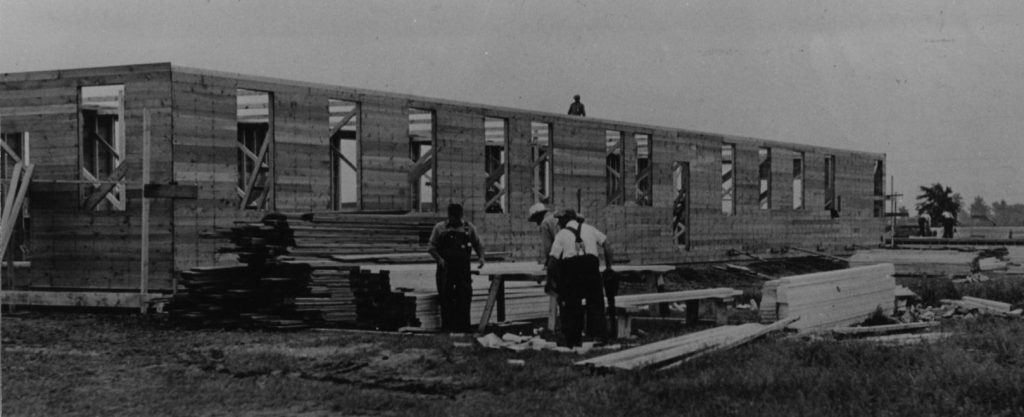 Hangar Under Construction
Hangar Under Construction Hangar Today
Hangar Today Gate into No. 7 EFTS
Gate into No. 7 EFTS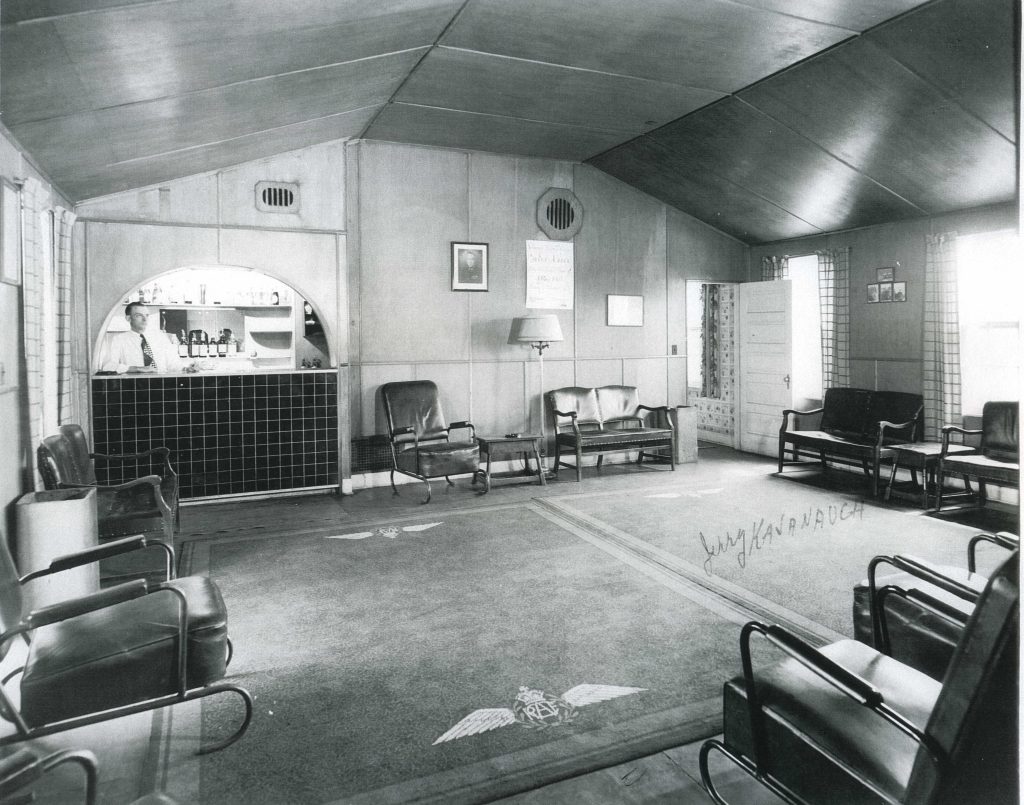 Lounge Area
Lounge Area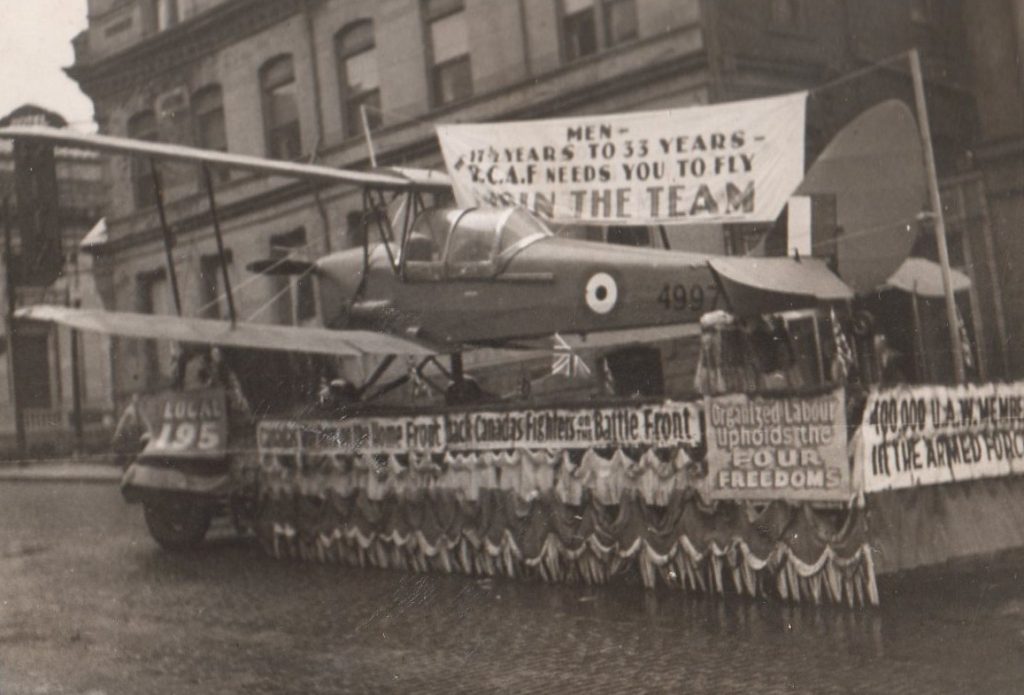 Join the Team!
Join the Team!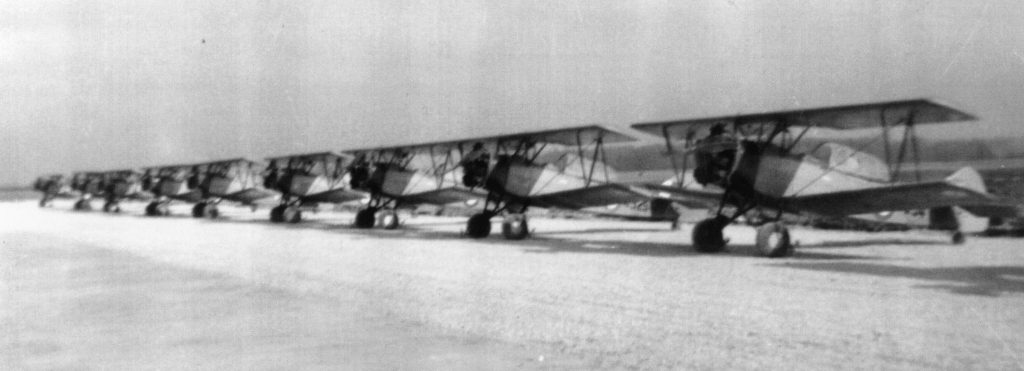 Flight Line
Flight Line
